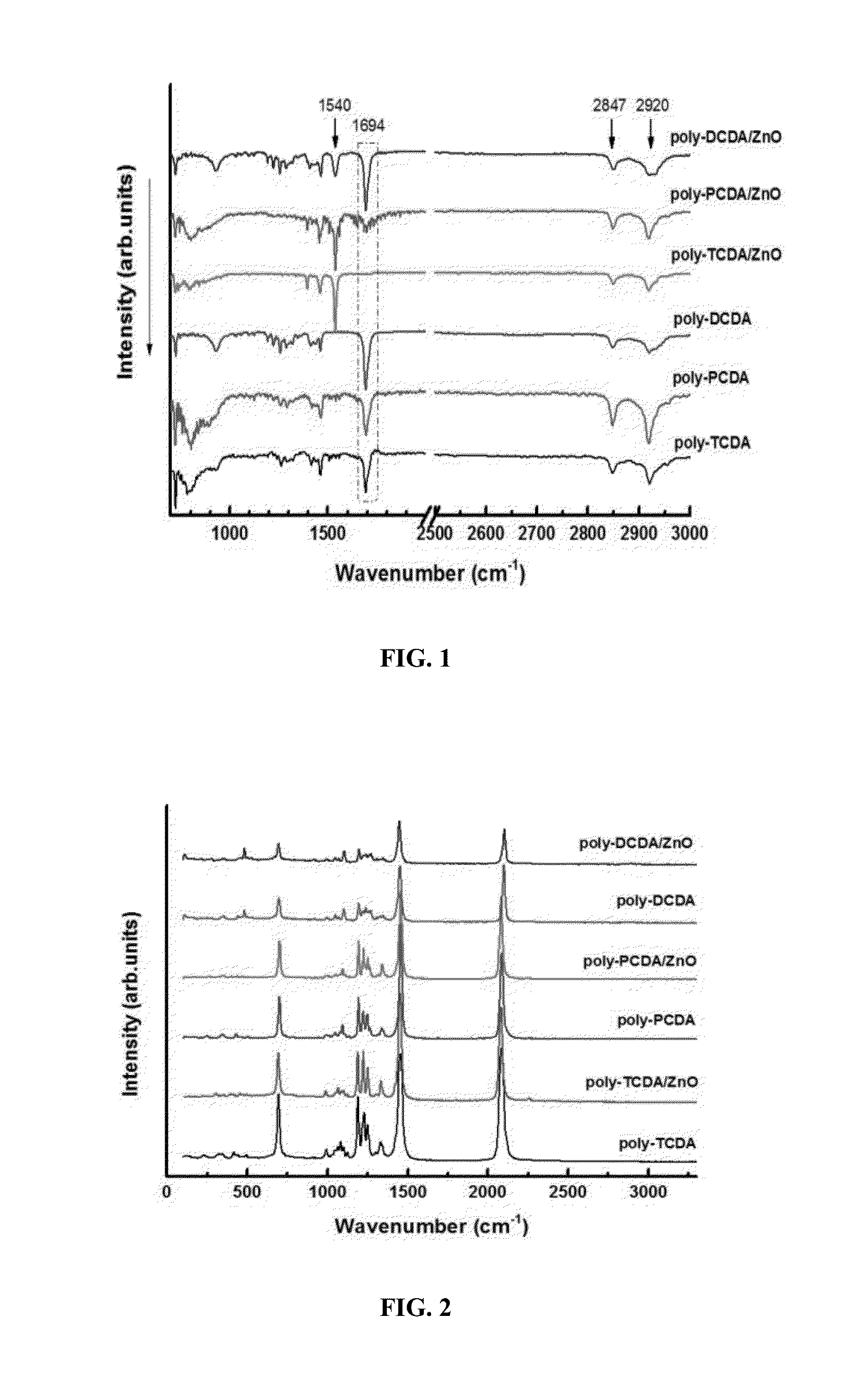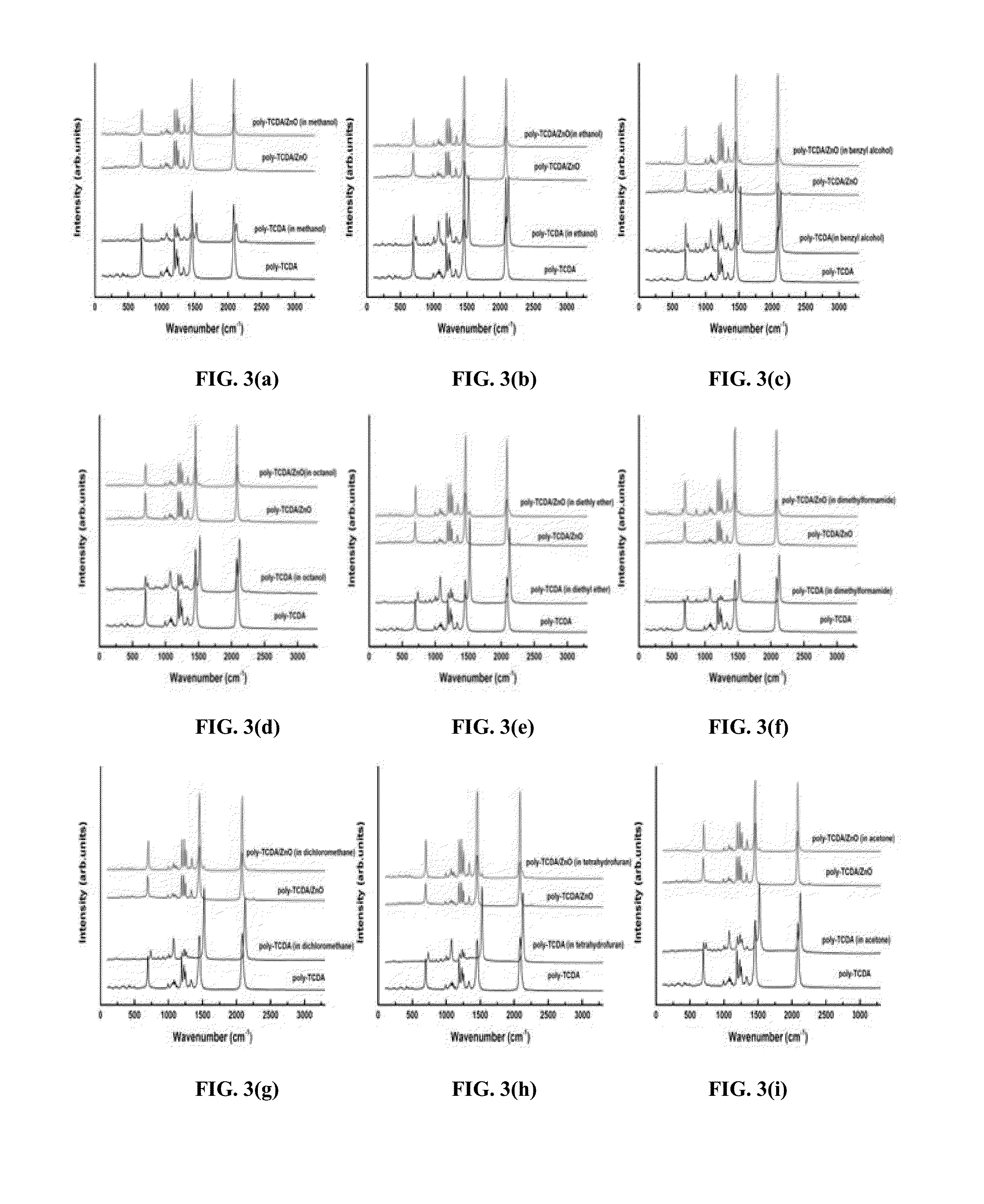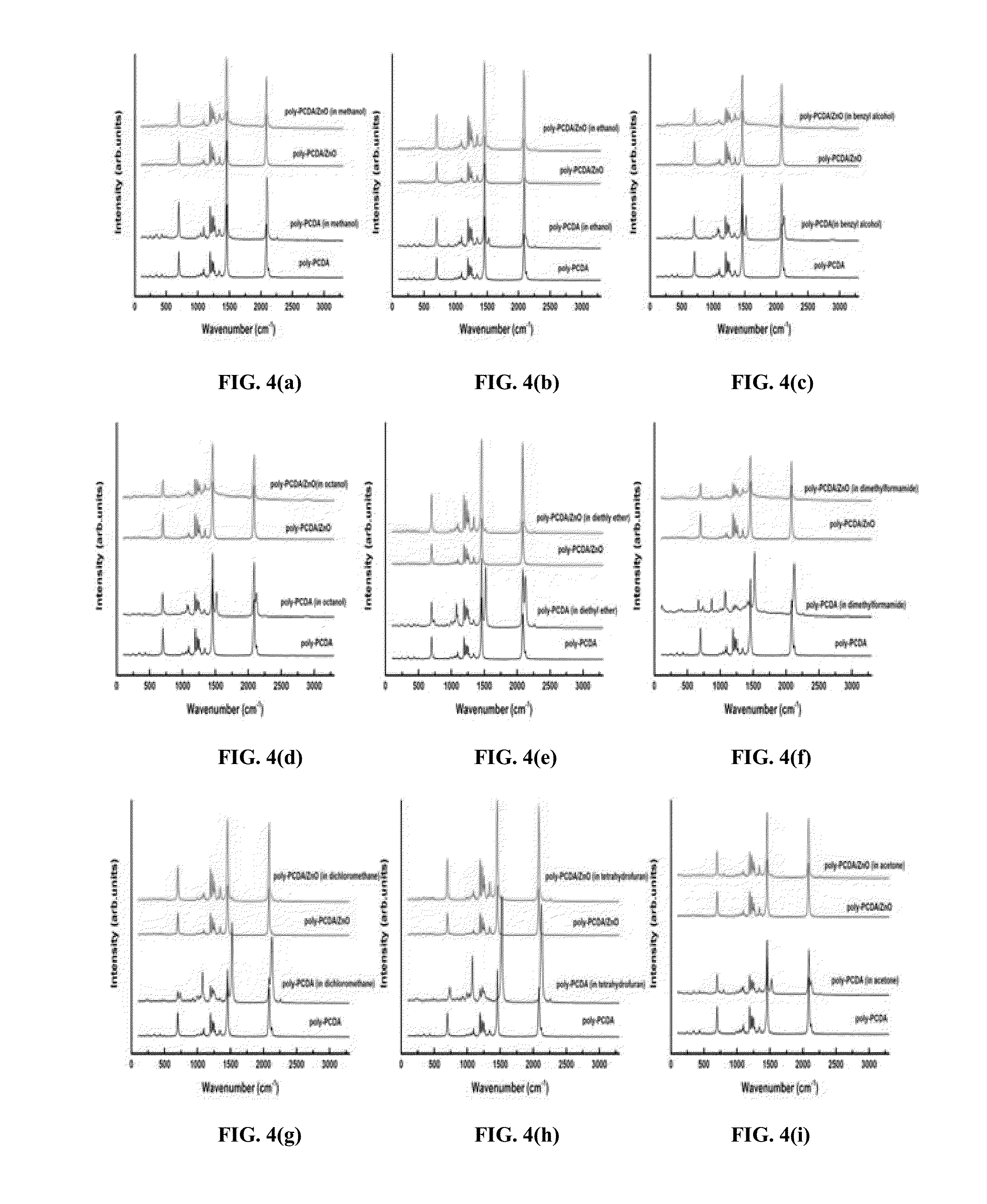Polydiacetylene and polydiacetylene/zno nanocomposite sensors
- Summary
- Abstract
- Description
- Claims
- Application Information
AI Technical Summary
Benefits of technology
Problems solved by technology
Method used
Image
Examples
examples and experiments
Thermochromically Reversible Compositions of PCDA and PCDA / Nanosize ZnO
[0091]Materials.
[0092]PCDA was purchased from GFS Chemicals and nanocrystalline ZnO (<100 nm diameter) was purchased from Sigma-Aldrich. Analytical grade chloroform was purchased from Sigma-Aldrich and used without further purification.
[0093]Preparation of PCDA and PCDA / ZnO Composites Ink.
[0094]Different amounts of ZnO (5 wt %, 10 wt %, 15 wt %) were suspended in a solution of the PCDA monomer (4 mM) in chloroform. The suspension was sonicated in a water bath at 25° C. for 30 min and dried at 40° C. with magnetic stirring for 8 hours. The magnetic stirring was stopped after the chloroform evaporated. PCDA or PCDA / ZnO nanocomposite ink was prepared by probe sonicating 1mMol PCDA or PCDA / ZnO in 40 ml deionized water (DI water) with a certain amount (1.5 wt %) of sodium dodecyl sulfate (SDS) for 30 min. A constant temperature bath at 25° C. was utilized to prevent heating during sonication.
[0095]Fabrication of Poly-...
PUM
| Property | Measurement | Unit |
|---|---|---|
| Fraction | aaaaa | aaaaa |
| Fraction | aaaaa | aaaaa |
| Fraction | aaaaa | aaaaa |
Abstract
Description
Claims
Application Information
 Login to View More
Login to View More - R&D
- Intellectual Property
- Life Sciences
- Materials
- Tech Scout
- Unparalleled Data Quality
- Higher Quality Content
- 60% Fewer Hallucinations
Browse by: Latest US Patents, China's latest patents, Technical Efficacy Thesaurus, Application Domain, Technology Topic, Popular Technical Reports.
© 2025 PatSnap. All rights reserved.Legal|Privacy policy|Modern Slavery Act Transparency Statement|Sitemap|About US| Contact US: help@patsnap.com



